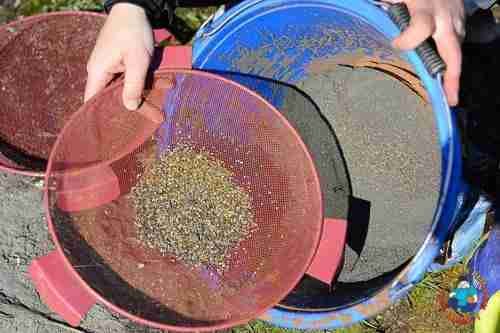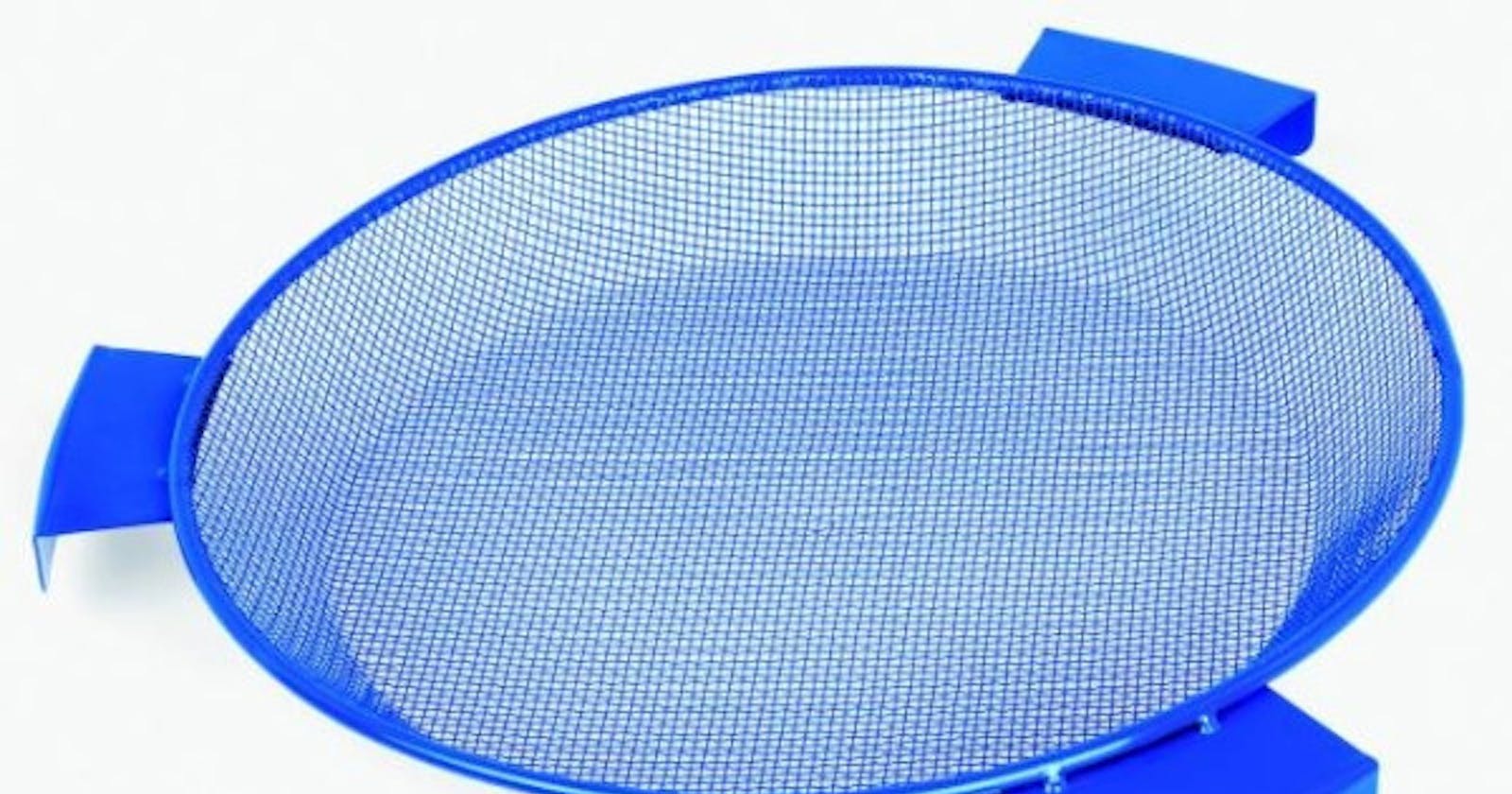Fishing bait sieves are an essential tool for anglers, as they allow you to separate and sort your baitfish for more effective fishing.
There are several different types of fishing bait sieves available, each with its unique features and benefits.
In this article, we will provide an overview of the different types of fishing bait sieves, as well as tips for using, maintaining, and caring for your sieve.
Types of Fishing Bait Sieves

Each size is suitable for a specific occasion. There is one simple rule that everyone should follow: the more passive the game, the fewer fish, and the lower the water temperature, the smaller the sifting grate is needed. Even finely ground complementary foods must be passed through a sieve, since in any case, lumps form when moistened.
Why large lumps are harmful and why they should still be sifted can be explained by several factors: if large lumps are present at the bottom, then the fish can simply eat up and not bite on the bait; when sifted, the food becomes airy and, according to the experience of many professionals, fish like this kind of bait. Manufacturers produce sieves with a diameter that usually fits standard bait buckets. There are grates with a diameter of 34 cm for 17-liter buckets and 42 cm for larger volumes.
The different types of fishing bait sieves available
There are several different types of fishing bait sieves available, each with its unique features and benefits. Here is an overview of the most common types:
Mesh Fishing Bait sieve
These sieves are made from a fine mesh material, usually made of metal or plastic. They are designed to separate smaller baitfish from larger baitfish and can be used for both freshwater and saltwater fishing.
Pros: Fine mesh material allows for separation of small baitfish, lightweight and portable, suitable for both freshwater and saltwater fishing
Cons: May not be durable enough for heavy use, may not be effective for catching larger baitfish
Net Fishing Bait Sieve
These sieves are made from a larger, more durable mesh material and are shaped like a net. They are typically used for catching and sorting larger baitfish and are often used in saltwater fishing.
Pros: Durable mesh material allows for catching and sorting large baitfish, suitable for saltwater fishing, and often has a handle for easy use
Cons: May be too large and bulky for some anglers, and may not be effective for separating smaller baitfish
Handheld Fishing Bait sieve
These sieves are small and portable and are designed to be held in the hand while sorting through the bait. They are suitable for both freshwater and saltwater fishing and are often used by anglers who prefer to catch their bait.
Pros: Small and portable, easy to use, suitable for both freshwater and saltwater fishing
Cons: May not be durable enough for heavy use, may not be effective for catching larger baitfish
Bucket Fishing Bait Sieve
These sieves are designed to be used in a bucket or tub and are often used for sorting through large amounts of bait. They are suitable for both freshwater and saltwater fishing and are often used by commercial bait dealers.
Pros: Suitable for sorting through large amounts of bait, suitable for both freshwater and saltwater fishing
Cons: May be too large and bulky for some anglers, and may not be suitable for catching small baitfish
Aquatic Life Sieves
These sieves are designed to separate aquatic life from debris and are often used by biologists and researchers to study aquatic ecosystems. They are not typically used for fishing.
Pros: Designed specifically for separating aquatic life from debris, useful for biologists and researchers
Cons: Not typically used for fishing, may not be effective for separating baitfish.
How to Use a Fishing Bait Sieve
To use a fishing bait sieve, you will need a sieve, a bucket or tub, and some baitfish.
First, fill the bucket or tub with water and add the baitfish.
Then, hold the sieve under the water and let the baitfish swim through the mesh.
Use the sieve to separate the larger baitfish from the smaller ones by gently shaking the sieve or using a spoon or other tool to move the baitfish around.
Once you have sorted the baitfish, use the sieve to remove the sorted baitfish from the water.
If you have a large amount of baitfish, you may need to repeat this process several times.
Step-by-step instructions for using a fishing bait sieve:
Gather your materials: You will need a fishing bait sieve, a bucket or tub, and some baitfish.
Fill the bucket or tub with water: Fill the bucket or tub with enough water to cover the baitfish.
Add the baitfish: Slowly add the baitfish to the water in the bucket or tub.
Place the fishing bait sieve in the water: Hold the sieve under the water and let the baitfish swim through the mesh.
Sort the baitfish: Use the sieve to separate the larger baitfish from the smaller baitfish. You can do this by gently shaking the sieve or by using a spoon or other tool to move the baitfish around.
Remove the sorted baitfish: Once you have separated the larger and smaller baitfish, use the sieve to remove the sorted baitfish from the water.
Repeat the process as needed: If you have a large amount of baitfish, you may need to repeat the process several times to sort all of the baitfish.
The bait sieve is a very useful tool for fishing. So, it is necessary for uniform wetting of the bait and its distribution over the reservoir. When wiped, the food is saturated with oxygen and becomes airier. This factor gives an additional volume of the mixture. The sieve has different sizes and is suitable for different fishing conditions.
Purpose of screening the bait
Each type of lattice is used for certain cases:

Following the basic rule, the smallest gratings (2 mm) are used in places with difficult conditions, where the fish are inactive. There is another excellent use - washing bloodworms for hooking in cases where you need to sort out live and dead larvae.
Products with a mesh size of 3 mm are excellent for fishing in stagnant water. And also they sift large fractions of bait when catching smaller fish.
Lattices with a cell of 4 mm are used for baiting active fish. Such medium-sized fish love large feed baits, and they are not saturated when they are eaten. You can use such a sieve for sifting clay.
The largest sieves (5 mm) are needed for large baits.
Making DIY sieve for Fishing
Almost all tools designed for catching fish can be made independently. Screening devices are also no exception. Making a sieve for bait with your own hands is feasible even for beginners.
Production takes place on the principle of a sieve for flour and is as follows:
Prepare a plastic basin of the required size.
Gently pierce the bottom of the pelvis, leaving a small shoulder measuring 1 cm.
Then you need to prepare a grid with the required cell size, cut out a circle from it, equal in diameter to the bottom of the container, and an allowance (3-4 cm) added for installation.
Carefully place the mesh in the basin, and glue the allowance along the walls with a glue gun or other similar means. The main thing is to attach it so that nothing sticks out.
Each product is the main quality. The sieve should also be of high quality because if it is poorly performed, the tool can not only quickly become unusable, but also cut your hands.
A sieve is one of the essential tools for fishing, so you should not neglect it even with good bait.
Conclusion
In conclusion, a fishing bait sieve is an essential tool for any angler, as it allows you to separate and sort your baitfish for more effective fishing.
By choosing the right type of sieve, learning how to use it properly, and maintaining and caring for it, you can ensure that your sieve is in good working condition and ready to use whenever you need it.
Whether you are a beginner or an experienced angler, a fishing bait sieve can be a valuable addition to your tackle box.
